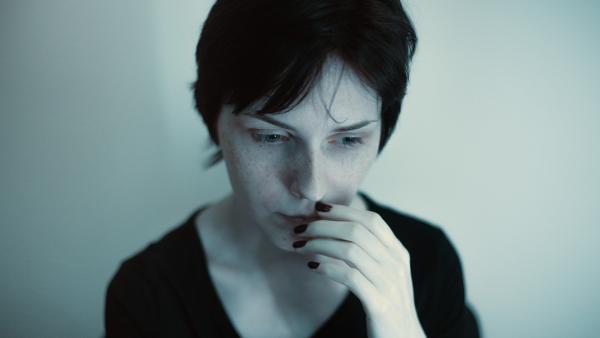When it comes to staying at home, what is the most significant driver, our government, or our beliefs? A working paper from the National Bureau of Economic Research teases out the different effects of fear and policy in lockdowns. The study is based upon cellphone data reporting our movements and looks at neighboring areas where shutdown policies differed. The study's beauty lies in its granularity; it looked at a county-wide rather than state-wide level, letting the variability, in this case of government policies, always lost in aggregation shine through.
Cellphone data geolocation data was collected from March 1st to May 16th and identified the businesses visited and the amount of time spent. It assumes that visits equate with economic activity.
"Total foot traffic fell by more than 60 percentage points, but legal restrictions explain only around 7 percentage points of that."

The red line represents the real data; the blue line is corrected for changing patterns of businesses being affected. But there is a clear trough in visits in early April, the 60% reduction. As you might expect, those reductions were unevenly distributed across business types; theater's lost 99% of their business, while there was a "slight increase at Outdoor Power Equipment Stores…". More critical to our discussion, April was long before most shutdown orders were put in place. But how to separate fear from policy?
Separating the two was based on regression data for the decreased foot traffic, broken out by counties, further categorized by what lockdown policies were in effect. County-level captures the local lockdown policies, channeling Tip O'Neil, former Speaker of the House, who said, "All politics are local."
The number of local deaths was strongly related to reductions in economic activity, accounting for nearly half of the total effect. When comparisons were made between counties with differing lockdown policies, the impact on commerce was reduced by only 7%.
While the influence of policy mandated shutdowns was small, its effect on the reallocation of business activity from "nonessential" to "essential" was far more significant. That should come as no surprise as we consider "big box" stores declared essential, small retail establishments, gyms, and restaurants nonessential. While policy reduced consumer activity overall by 5%, it reduced traffic in restaurants and bars by 30%, increasing grocery store activity by an equivalent amount. Fear can be found hidden in this data too. When essential businesses like grocery stores were stratified into small, medium, and large while traffic was down overall, it was greatest at the larger, high-traffic businesses (70%) and lower at 45% for the smaller businesses. In those localities with high deaths, the shift was even more dramatic.
For those following some of my "reporting," these smaller businesses may well have less traffic, but often because of their square footage had a higher density of consumers per square foot, increasing the likelihood of viral transmission. Just another example of the conflicting data that makes epidemiologic explanations nuanced.
A critical finding
When some jurisdictions repealed their stay-in-place policies, economic activity improved by the same small percentage, recovering by about 5%. If policy was not the real driver of our behavior, and the authors certainly make a good case that it was not, then the only driver left to consider is fear. Fear may not be the best word choice; you could substitute risk-aversion or concern, both of which may have a less emotive feel than fear. But that being said, the greatest motivator in our behavior was our attitude towards COVID-19 personally, not politically. If you were very concerned that you could get COVID-19 and die, you acted pre-emptively.
That individual calculation of risk-benefit will become increasingly crucial in the next few months. Vaccines are about to begin distribution, and while much is being made of trust in their safety and efficacy, we need to be aware of that other emotive force, fear. How many individuals who are fearful of the effect of COVID-19 on their lives will overcome a degree of mistrust over vaccination? How many of us, even with vaccines that are safe, effective, and widely distributed, will overcome their fear and venture out into the world, onto airplanes, buses, subways, and cruise ships. It may well be that unwinding fear is a far more significant hurdle in returning to normal than the promise or actuality of vaccines and better treatments resulting in less morbidity and mortality.
"The COVID-19 crisis led to an enormous reduction in economic activity. We estimate that the vast majority of this drop is due to individuals' voluntary decisions to disengage from commerce rather than government-imposed restrictions on activity."
In a world of vaccines and better care, we need to listen to our 32nd President, Franklin Delano Roosevelt.
"So, first of all, let me assert my firm belief that the only thing we have to fear is...fear itself — nameless, unreasoning, unjustified terror which paralyzes needed efforts to convert retreat into advance."
Source: Fear, Lockdown, And Diversion: Comparing Drivers Of Pandemic Economic Decline 2020 NBER Working Paper 27432




